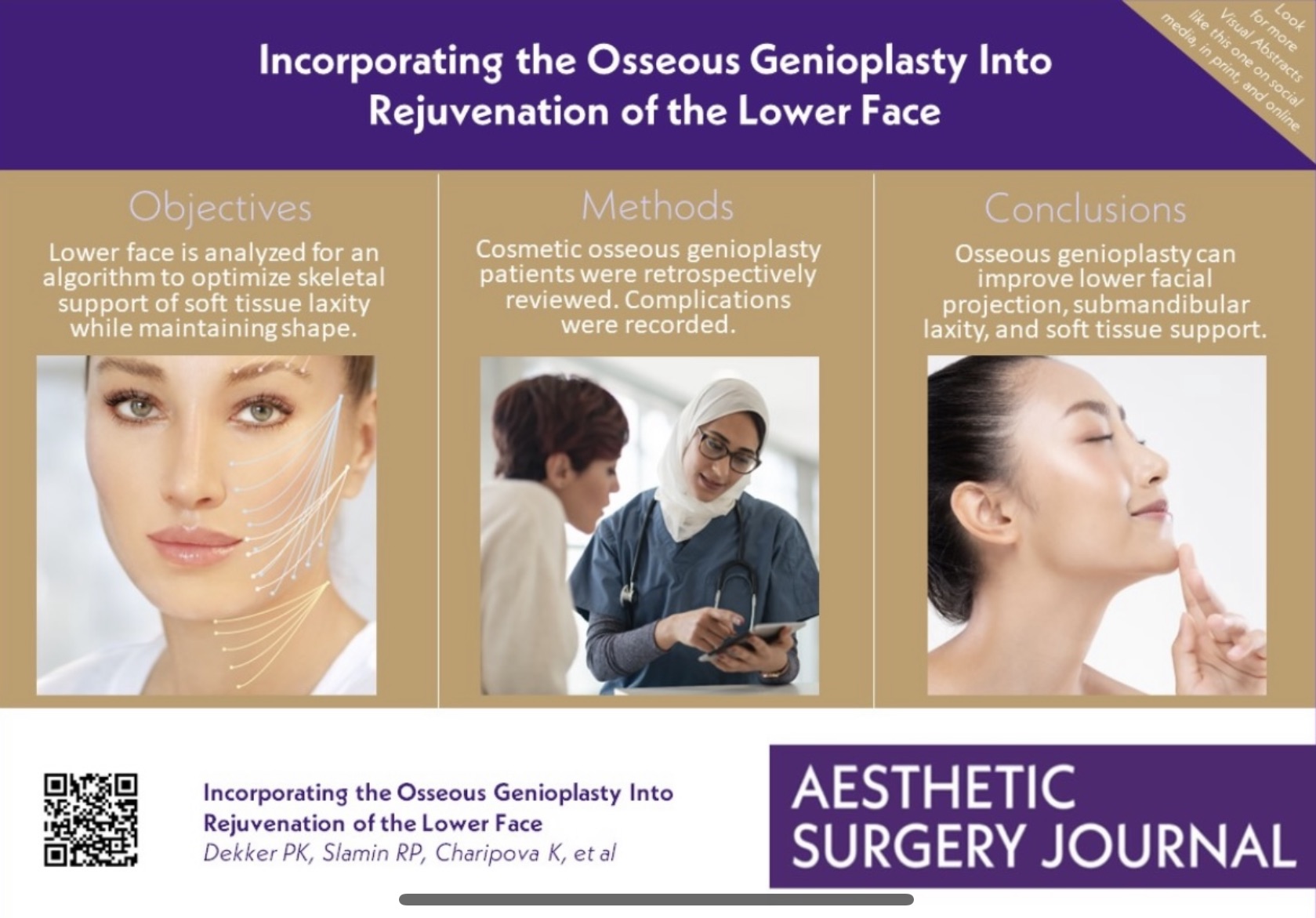Before and After Neck Lift Surgery
View our gallery of Neck Lift procedures
performed by Dr. Baker in Washington DC.
The neck lift is an operation that rejuvenates the lower third of the face. The overall face can be aesthetically divided into three parts: forehead, mid-face (cheek), and neck. A neck lift is a lift of the lower face and neck. But since aging in the lower face and neck occurs more rapidly than it does in the rest of the face, not every patient, who is a good candidate for a neck lift, needs to undergo a facelift. Facial rejuvenation surgery should be customized to each patient. The aesthetic challenge is to create a natural appearance where patients look like themselves, only younger and refreshed.
Dr. Baker will help you choose the approach that best suites your goals. The general goal of neck lift surgery is to provide a harmonious balance to your neck and facial features so that you feel better about the way you look.
View our gallery of Neck Lift procedures
performed by Dr. Baker in Washington DC.

This infographic prepared by the Aesthetic Surgery Journal highlights Dr. Baker’s publication describing the role of the osseous genioplasty in lower face and neck rejuvenation. In patients with a recessed chin, an advancement genioplasty is much more powerful than a chin implant to enhance rejuvenation of the neck and perioral region. Click link to read Dr. Baker’s publication
The best candidate for a neck lift is a man or woman whose lower face and neck have begun to reveal deep creases, redundant skin, or jowls, but whose skin still has some elasticity and whose bone structure is strong and well-defined. Most patients are in their forties to sixties, but neck lifts can be done successfully on people in their seventies or eighties as well. The health of the patient is more important than the age.
A neck lift can make you look younger and fresher, and it may enhance your self-confidence in the process. Before you decide to have surgery, think carefully about your expectations and discuss them with Dr. Baker.
Neck lifts are very individualized procedures. In your initial consultation, Dr. Baker will evaluate your face, including the skin, soft tissue volume, and underlying bone; and he will discuss your goals for the surgery. Based on your goals and your available recovery period, Dr. Baker will help you individualize your treatment plan so that it achieves your goals within your desired recovery period. Your consultation will include a detailed assessment of your face and all the tissue layers that are contributing to your concerns. Three-dimensional predictive imaging will be used to predict what Dr. Baker feels would be a realistic result in your situation. It is hoped that his will help you to determine if this procedure is something you would like to undergo.
Dr. Baker will check for medical conditions that could cause problems during or after surgery, such as uncontrolled high blood pressure, blood clotting problems, or the tendency to form excessive scars. Be sure to tell Dr. Baker if you smoke or are taking any drugs or medications, especially aspirin or other drugs that affect clotting.
If you decide to proceed with a neck lift, Dr. Baker will explain the techniques and anesthesia he will use, the type of facility where the surgery will be performed, and the risks and costs involved. Do not hesitate to ask him any questions you may have, especially those regarding your expectations and concerns about the results.
Dr. Baker’s neck lift usually takes three to four hours or longer if you are having more than one procedure done. To rejuvenate and restore youthful facial proportion, it is not necessary to pull the skin into the “wind tunnel” look. The majority of the tissue that creates undesirable signs of facial aging occurs deep in the skin. The creases and folds are created from deeper tissues descending the face secondary to the effects of gravity and the loss of tissue elasticity. Therefore, the goal of surgery is not to pull the skintight but rather to restore the deeper tissue to a more youthful position. Once the underlying sculptural qualities of youth have been restored, the skin can be gently redraped over the deeper tissue. The skin redundancy is then removed with the skin under minimal tension or pull. This restores a youthful appearance without an unnatural tight look.
Incisions vary significantly based on each patient’s physical exam and goals. Incisions may be as minimal as a small incision just behind each ear or may include an additional incision under the chin. For patients with more redundant tissue the incisions usually begin above the hairline at the temples, extend in a natural line in front of the ear (or just inside the cartilage at the front of the ear), and continue behind the earlobe to the lower scalp. If the neck needs work, a small incision may also be made under the chin. The deeper tissues are then redraped into a more youthful position before skin closure. Fat is removed in undesirable areas but may be added to other areas to create the volume of youth in the upper or midface.
Following surgery, a small, thin tube may be temporarily placed under the skin behind your ear to drain any blood that might collect there. The surgeon may also wrap your head loosely in bandages to minimize bruising and swelling.
Dr. Baker will give you specific instructions on how to prepare for surgery, including guidelines on eating and drinking, quitting smoking, and taking or avoiding certain vitamins and medications. Carefully following these instructions will help your surgery go more smoothly. If you smoke, it is especially important to stop at least three weeks before and after surgery. Smoking inhibits blood flow to the skin and can interfere with the healing of your incision areas. If your hair is very short, you might want to let it grow out before surgery, so that it’s long enough to hide the scars while they heal.
Whether Dr. Baker performs your neck lift at Georgetown University Hospital (Washington D.C.), Inova Fairfax Hospital (Falls Church, VA), or an ambulatory surgical facility (McLean, VA), you should arrange for someone to drive you home after your surgery, and to help you out for a day or two.
Dr. Baker performs most neck lifts under general anesthesia. Occasionally, he will perform neck lifts under IV sedation or twilight sleep. However, Dr. Baker feels it is safer for his patients to have a protected airway so he will likely recommend general anesthesia. If a patient is sedated and moving during surgery, the procedure will be more difficult. To minimize movement, more sedation can be given until the patient is no longer moving. The definition of general anesthesia is the induction of a state of unconsciousness with the absence of pain sensation over the entire body, through the administration of anesthetic drugs. As sedation is increased to keep the patient unaware of the procedure and to keep them from moving, what started as twilight sleep may begin to fit the definition of general anesthesia. Now the patient is under general anesthesia without a protected airway. Safety is Dr. Baker’s primary concern is patient safety, especially in elective surgery. For this reason, every procedure is performed under the care of an anesthesiologist in a facility with multiple anesthesiologists available in the need of additional assistance.
When a neck lift is performed by a qualified plastic surgeon, complications are infrequent and usually minor. Still, individuals vary greatly in their anatomy, their physical reactions, and their healing abilities, and the outcome is never completely predictable. Complications that can occur include hematoma (a collection of blood under the skin that must be removed by the surgeon), injury to the nerves that control facial muscles (usually temporary), infection, and reactions to the anesthesia. Poor healing of the skin is most likely to affect smokers. You can reduce your risks by closely following Dr. Baker’s advice both before and after surgery.
There is not usually significant discomfort after surgery. If there is, it can be lessened with the pain medication prescribed by Dr. Baker (severe or persistent pain or a sudden swelling of your face should be reported to Dr. Baker immediately). Some numbness of the skin is quite normal; it will disappear in a few weeks or months. Dr. Baker may tell you to keep your head elevated and as still as possible for a couple of days after surgery, to keep the swelling down. If you have had a drainage tube inserted, it will be removed one or two days after surgery. Bandages, when used, are usually removed after one to five days. Do not be surprised at the pale, bruised, and puffy face you see. Just keep in mind that in a few weeks you will be looking normal. Most of your stitches will be removed after about five days. Your scalp may take longer to heal, and the sutures in your hairline could be left in a few days longer.
You should be up and about in a day or two but plan on taking it easy for the first week after surgery. Be especially gentle with your face and hair, since your skin will be both tender and numb, and may not respond normally at first. Dr. Baker will give more specific guidelines for gradually resuming your normal activities. They are likely to include these suggestions: Avoid strenuous activity (including sex and heavy housework) for at least two weeks (walking and mild stretching are fine); avoid alcohol, steam baths, and saunas for several months. Above all, get plenty of rest and allow your body to spend its energy on healing.
In the beginning, your face may look and feel rather strange. Your features may be distorted from the swelling, your facial movements may be slightly stiff and you will probably be self-conscious about your scars. Some bruising may persist for two or three weeks, and you may tire easily.
By the third week, you will look and feel much better. Most patients are back at work about ten days to two weeks after surgery. If you need it, special camouflage makeup can mask most bruising that remains.

The chances are excellent that you will be happy with your neck lift-especially if you realize that the results may not be immediately apparent. Even after the swelling and bruises are gone, the hair around your temples may be thin and your skin may feel dry and rough for several months. Men may find they have to shave in new places-behind the neck and ears-where areas of beard-growing skin have been repositioned.
You will have some scars from your neck lift, but they are usually hidden by your hair or in the natural creases of your face and ears. In any case, they will fade within time and should be scarcely visible.
Having a neck lift does not stop the clock. Your face will continue to age with time, and you may want to repeat the procedure one or more times-perhaps five or ten years down the line. But in another sense, the effects of even one facelift are lasting; years later, you will continue to look better than if you had never had a neck lift at all.
The total cost of Neck Lift surgery is determined based on factors like your medical examinations, surgeon’s fee, hospital charges, post-surgery garments, and anesthesia. The exact techniques used will also impact cost, as will the total time needed to perform the surgery.
To learn more about the treatment of Neck Lift in Washington DC, contact us and schedule a consultation with board-certified plastic surgeon Dr. Baker.
Wrinkles and fine lines are two of the most common signs of facial aging and ... Everyone dreads the fact that one day they will have to wake up and find ... Sagging breasts, asymmetric breasts, and nipples pointing downwards are common problems that can occur after ...

